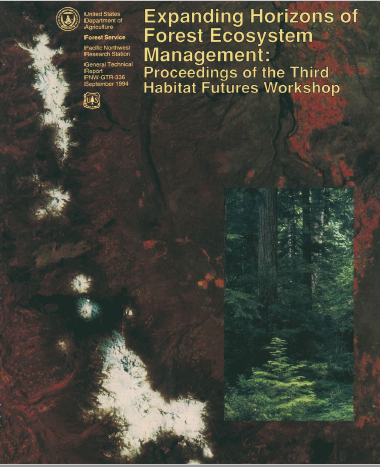
News/Reports
Expanding Horizons of Forest Ecosystem
An Emerging Global Consensus
Toward Sustainability
Gary L. Larsen
2
second event was the publication in 1987 of “Our Common Future,” the report of the World
Commission on Environment and Development,1 which developed the most comprehensive
link to date between the environment and development and called for a global conference,
which became UNCED (World Commission on Environment and Development 1987).
The Earth Summit marked the conclusion of 2 years of extensive diplomatic negotiations
in preparation for UNCED. Three major agreements were adopted by the consensus of
nearly 180 countries: “Agenda 21”—an action plan of 40 chapters; “Rio Declaration on
Environment and Development”; and a statement of principles for forests. In addition, two
major conventions on climate change and biodiversity, negotiated outside of UNCED, were
opened for signature by heads of state at Rio de Janeiro.
UNCED was both a catalyst and an expression of deep-rooted changes taking place in the
world. It marked a turning point from an old world order dominated by national security
issues defined along an east-west axis to a new world order whereby the notion of national
security embraces issues of economic and environmental security, defined along a northsouth
axis with developed countries at one pole and developing countries at the other.
This new order is focused on economic and social development. UNCED linked these to
the stewardship of natural resources.
The intertwining themes of the economic, social, and environmental dimensions of sustainability
were woven throughout the UNCED negotiations and agreements. While the Earth
Summit in Rio de Janeiro marked the end of 2 years of extensive diplomatic negotiations,
it also marked the emergence of a new era. The actual outputs are all starting points:
• lnitiation of action among signatories to deal with biodiversity and climate change through
signing and subsequent ratification of two legally binding conventions.
• A consensus among all countries declared in two sets of principles—one on environment
and development, the “Rio Declaration on Environment and Development,” and
the other on forests (forest principles) (United Nations 1992b, 1992c).
• An extensive global action plan, “Agenda 21,” adopted to put the world on the course of
sustainable development for the 21st century (United Nations 1992a).
• Agreement to establish within the United Nations a Commission on Sustainable Development
that will provide an intergovernmental forum for pursuing the agreements made
at UNCED.
The “Rio Declaration on Environment and Development” is a proclamation of 27 principles
aimed at meeting the needs of present and future generations by integrating environment
and development (United Nations 1993c). The principles can be organized by subject
matter into four broad categories: (1) meeting the needs of present and future generations,
(2) international cooperation, (3) actions of national governments, and (4) transboundary
issues. Figure 1 shows the main topics of the principles and displays the wide range of
issues dealt with in this declaration.
1 Also known as the Brundtland Commission Report,
See the complete report here: FOREST ECOSYSTEMS: GTR336A

